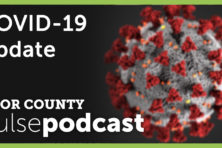An Organizational Lifesaver: The Tickler File
- Share
- Tweet
- Pin
- Share

So what’s a tickler file? Also called an everyday sorter, expanding desk file, pop-up file or desk file/sorter, it’s a most reliable and logical place to store your active papers and pending items until it’s time to act on them because it “tickles” your brain to help you remember things. It also shrinks those piles of to-do items and guarantees they won’t get lost. In short, it’s an organizational lifesaver if you let it be, and it’s my favorite organizing tool.
A tickler file can take the form of a book, which you can purchase through an office-supply purveyor. (Smead and Pendaflex both make nice versions.) There’s also an accordion-style pouch variety, or you can make your own with hanging file folders to store in a file drawer, or with clear plastic sleeves snapped into a binder to create a mobile version.
The book format has pages numbered 1 through 31 for the days of the month and 12 additional pages labeled with the 12 months. The pouch’s dividers are set up similarly, and you’d label your hanging file folders or clear sleeves the same way: one for each day, and one for each month.
But what do you do with a tickler file? It’s the grandest place for storing pretty much anything that you’ll need to act on or refer to in the future – whether that will occur on a specific day or on one that you choose – so you simply file each piece of paper or paraphernalia under the day or month when you’ll need to deal with it, then handle what’s in each slot on the appropriate day.
When you near the end of a month, transfer everything from the next month’s monthly slot into the appropriate daily slots, and you’re ready for a new month of being organized!
We live in a much more electronic world than we used to, but until we’ve truly gone paperless, let’s get specific about the kinds of items that can go into a tickler file:
• bills to pay before their due dates
• invitations, event details and accompanying maps or directions
• travel itineraries and flight and hotel confirmations
• tickets to a concert, play or sports event
• meeting agendas and associated materials
• forms, applications and registrations to submit by a deadline
• coupons, gift cards and gift certificates to use when you’ll be visiting a particular establishment
• greeting cards to mail before special occasions
• supporting materials for appointments, events and errands: membership cards, receipts for items to return, dry-cleaning or repair claim tickets, lists of items to buy during a shopping trip, checks to deposit, sale flyers and notes about symptoms to discuss with your doctor
• those little appointment cards you get from your dentist, doctor and hair stylist
• most things that you’d normally stick on a bulletin board or the fridge, or clip to the family calendar – where they may fall off, get buried or end up forgotten
In addition to filing materials to support things that happen on specific days, you can also include materials with looser time frames:
• reminders to schedule an oil change or furnace cleaning
• notes about things you might want to do or be reminded of occasionally: weekend entertainment options, things you’re considering buying or classes to take
• materials related to pending items, such as an online purchase you’re waiting to receive or an action someone else must take. Put the materials into a future slot, then follow up later if needed. (You can also create a “pending file” where you store this paperwork. Then put a note in your tickler file to remind yourself to check it occasionally to make sure nothing has fallen through the cracks.)
For the enormous help it offers, a tickler file requires just two things from you (such a deal!): 1) that you put things into it, and 2) that you check it every day – or, preferably, every night as part of your next-day planning so that you won’t be caught off guard by anything you find.
Some people say they couldn’t possibly remember to check a tickler file every day, but I say it’s like the well-entrenched, excellent habit they created long ago of brushing their teeth every morning: Both are well worth the habit-formation effort because the rewards are great.
Just think of it: You’ll be able to reduce those emotionally draining piles of paper because many of the items in them are great tickler-file candidates that you can parcel out according to when you can realistically deal with them. You’ll also feel confident that nothing is lost because it’s all safely stored and ready to pop up just when the time is right for action. It feels fabulous to have precisely what you need, exactly when you need it – especially when those things might have been lost or forgotten otherwise.
This is “planned procrastination” at its finest because you consciously and conscientiously plan to deal with something later – and then you actually do it. In the meantime, it isn’t taunting or haunting you, and you need to handle only one slot each day, not an overwhelming to-do pile.
Devotees swear by tickler files because they virtually never lose anything and always have what they need when they need it. The farthest that anything can go astray is into a neighboring tickler-file slot rather than buried under a pile of mail and newspapers.
Give yourself a few weeks to devote yourself to – and fall in love with – a tickler file. The powerful benefits should be a big motivator to continue using it.
Paula Apfelbach, the former owner of Breathing Room Professional Organizing in Madison, is now the copy editor at the Peninsula Pulse and Door County Living magazine.



